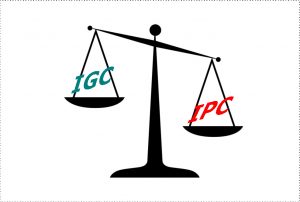Como actualizar la renta de un alquiler de un inmueble
Según la Ley de Arrendamientos Urbanos, las actualizaciones de la renta de un inmueble se realizarán cuando se cumpla cada año de vigencia de contrato y usando el último índice publicado en la fecha en la que deba actualizarse el contrato de arrendamiento previamente firmado. Hay que tener en cuenta que en el caso de que no se haga referencia en el contrato de arrendamiento de la actualización anual de la renta, según LAU no se debe aplicar ninguna.
Estas actualizaciones pueden hacerse o bien con el IPC (Índice de Precios de Consumo) o bien con el IGC (Índice de Garantía de Competencia). Ambas opciones son correctas.
Si se pactara expresamente la subida de renta anual sin detallar que índice se aplica, la renta, según LAU, siempre deberá actualizarse con el IGC.
El IGC tiene la característica que nunca se aplica en negativo y el porcentaje máximo de subida es del 2%. No ocurre así con el IPC, ya que su variación a la baja puede dar como resultado una renta inferior a la inicial.
Tanto propietario como inquilino pueden aplicar la variación del índice a la renta. Cabe destacar que hoy por hoy la más utilizada sigue siendo el IPC.
En el INE podemos encontrar una herramienta muy útil para el calculo de la actualización de la renta con el IPC. La base para dicha adaptación estará constituida por la renta que estén abonando los arrendatarios al tiempo de practicarse cada revisión. Dicha adaptación se realizará cada año, tanto en el plazo pactado como en caso de prórrogas, bien sean convenidas por la tácita reconducción o por imperativo legal. Si por el retraso con que se publican los índices, la adaptación no pudiera realizarse en la fecha prevista, se girará un recibo por la diferencia en más o en menos desde el mes en que procediera. En ningún caso la demora en practicar la revisión supondrá renuncia a la misma.
Si desea actualizar la renta de su inmueble, pulse aquí.

How to update the rent of your property

According to the Urban Leasing Law, updates on a property rent will be made at the end of each year of the contract, using the latest index published at the moment. Must know that if your contract doesn’t mention any update, according to the Spanish Urban Leasing Law, none should be applied.
These updates can be aply either with the IPC (Consumer Price Index) or with the IGC (Competition Guarantee Index). Both options are right.
If the annual rent increase is expressly agreed for both parts, without detailing which index will be applied, the rent must always be updated with the IGC.
The IGC has the characteristic that it is never applied in negative and the maximum percentage of rise is 2%. This is not the case with the IPC, since its downward variation may result in a lower income than the initial one.
Both landlord and tenant can apply the variation of the index to the rent. It should be noted that today the most widely used is still the IPC.
In the INE we can find a very useful tool for calculating the update of income with the IPC. The basis for said adaptation will be the rent that the tenants are paying at the time of each revision. This adaptation will be carried out every year, within the agreed period, either agreed by tacit reconsideration or by legal imperative. If, due to the delay with which the indexes are published, the adaptation cannot be carried out on the scheduled date, a receipt will be issued for the difference in more or less from the month in which it came. In anycase, the delay practicing the review will suppose a resignation of it.
If you want to update the rent of your property, click here.


 Español
Español English
English